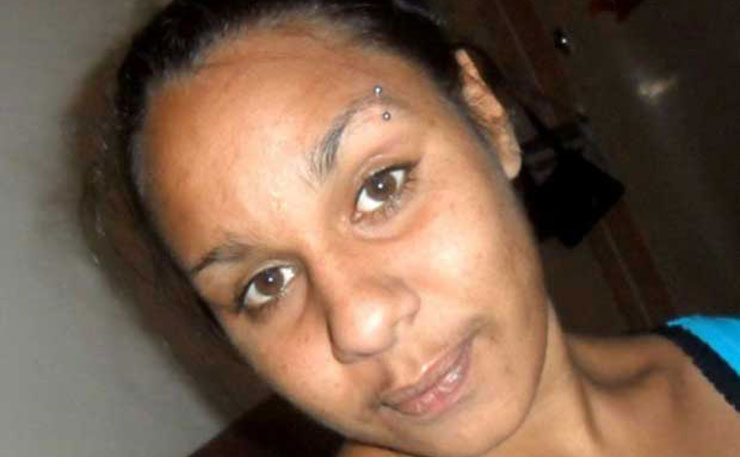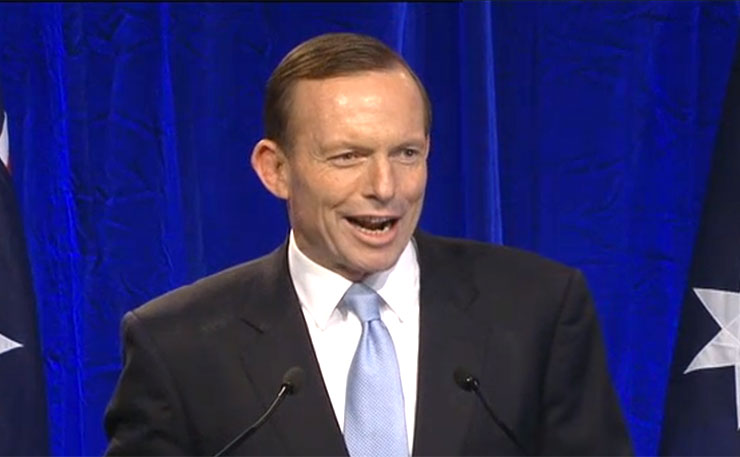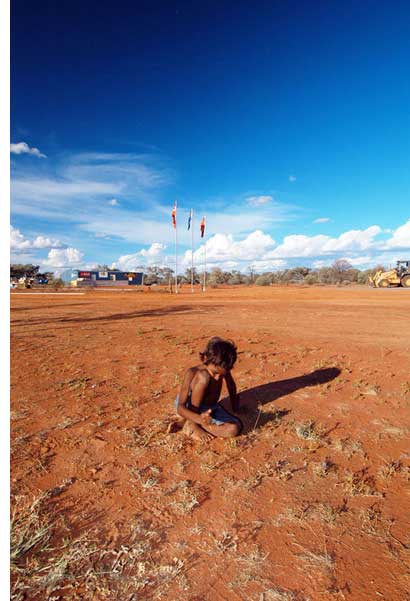Everything you ever wanted to know about empathy, but were too upset to ask, from Dr Lissa Johnson.
It was difficult to stomach the reports of animal cruelty in the greyhound racing industry last month. So alarming was the Four Corners coverage of injured rabbits and possums, dying slowly as they screamed in terror and pain, that it made front page news the next day.And rightly so. No living creature in human care should die like that.
Which gives pause for thought.
I wonder if Julieka Dhu, a Yamitji woman arrested for unpaid parking fines in Port Hedland last year, experienced something similar as she lay dying in her jail cell.
One can only imagine the anguish, horror and helplessness of a slow painful death before others’ eyes while pleading repeatedly for help. What Julieka’s family must feel knowing that she died like that is beyond harrowing to contemplate.
For some reason, however, Julieka’s suffering has elicited less of our collective outrage and concern than the suffering of the animals in the Four Corners report.
Far less.

At the time of writing, two weeks after the Four Corners story broke, Googling “greyhound Four Corners” yielded 418,000 results, 12,300 under “news results”. Googling “Julieka Dhu”, more than 6 months after her death, yielded 6,570 results, with nothing under “news results”.
Nothing. There is not even a section for “news results”. Apparently Julieka’s death was insufficiently newsworthy to generate sufficient news.
What on earth could explain that?
It is not that we are a nation of monsters, obviously. Nor racists necessarily, although racism undoubtedly plays a role. While monstrously racist in its impact and effect, our collective indifference to Julieka Dhu’s death is more complicated than that.
It has to do with our empathy. While we might consider ourselves empathic, and empathic we may be, empathy is a complex and fragile state.
An emotionally precious resource, empathy is considered ‘rare’ under certain circumstances. It is rare not because few people are empathic, but because we are unconsciously careful about where and how we invest our empathy. And, like other precious resources, our expenditure of empathy is highly sensitive to a number of subtle but powerful influences.
Sometimes it is in governments’ interests to galvanise our empathy, for instance in response to suffering at the hands of our government’s enemies, such as Westerners beheaded by ISIS. Other times it is in our governments’ interests to inhibit our empathy, for instance in response to suffering at the hands of our governments’ allies, such as Egyptians and Saudi Arabians beheaded and murdered by their own governments.
Far from being “soft”, empathy is hard political currency. Our leaders bank on it, and its absence, when floating policy, particularly policy with a human cost.
Our current Government, for instance, underestimated public empathy for those on the receiving end of their disastrous budget. The simple plan to brand vulnerable individuals ‘entitled’ proved inadequate to harden the public heart, and backfired for being transparently callous and unfair.
If there is one thing that this has taught us, it is that public opinion (still) matters. When the electorate gets very upset about an issue, the Government is forced to take note.
How is it, then, that we have been hearing about Aboriginal deaths in custody and rates of incarceration for decades with little sustained public outrage or protest? Why are we not up in arms that the majority of the 339 recommendations of the 1987 Royal Commission into Aboriginal Deaths in Custody have never been implemented?
Why are emotions more readily roused by the greyhound racing industry than by that?
Why have asylum seekers suffered inhumane conditions under successive governments only to reach such unconscionable extremes of mistreatment that we can no longer look the other way? How do we countenance the millions of unprovoked civilian deaths and displacements that we and our allies have created in the Middle East?
Why are we more easily upset, and more viscerally moved, by the suffering of small animals than by this?
When empathy for animals exceeds that for humans, it is thought to be largely on the grounds of innocence. Animals bear no responsibility for their suffering. They are fragile and helpless. They did nothing to deserve it.
Interestingly, Tony Abbott appealed to such notions of deservingness and responsibility in his response to the Closing the Gap report in Parliament. He said, “Governments can fund and governments can urge, but governments can’t change attitudes and behaviours. Closing the gap is not something to be granted by this Parliament to Indigenous Australians; closing the gap is to be grasped by them.”
You can lead a horse to water and all that….

Coincidentally, or not, the definition of “modern racism” aligns well with this very stance. It involves the position that underprivileged groups are responsible for their own disadvantage.
As well as justifying inequality, such responsibility-shifting absolves those on the more comfortable side of the gap from their burden of empathy. Those suffering on the other side did something to deserve it.
Across two papers in 2014, Jamil Zaki and his colleagues at Stanford University extended and reconceptualised existing empathy research, with a focus on the notion of empathic cost. In certain circumstances, allowing oneself to feel empathy for others opens up a can of emotional worms that is simply too painful, or too complicated, to bear.
Under these circumstances, we are vulnerable to seeking escape from the pain of empathy, resulting in what the authors call “empathic failures”.
One particularly unpalatable worm in the empathic can is dissonance.
Dissonance occurs when we hold important beliefs that are irreconcilably inconsistent. It is an aversive state from which we seek relief.
For instance, “Australia is a fair society” and “Aboriginal Australians are exploited and oppressed” is likely to create dissonance. It threatens our ‘just world beliefs’. On a more personal level, “I am a humane person” and “I enjoy the fruits of centuries of Aboriginal exploitation” creates greater dissonance still. It threatens our self-beliefs.
In this example, the more that we empathise with Aboriginal and Torres Straight Islander people the more our dissonance is peaked, causing a form of what Zaki and colleagues call empathic pain. Paradoxically, the more that we care about being humane and fair in the first place the more painful this dissonance is likely to be, and the more driven we are to escape.
Blaming the victim, overtly or subtly, is one way out.
Action is another. Rather than shifting the blame, helping those who are suffering reduces the contradiction between our actual and ideal selves, mitigating dissonance and empathic cost. We can feel the empathy without the dissonant, guilty pain.
Of course this path is not always easy to take. Acting against animal cruelty in the greyhound racing industry, for instance, is relatively simple: stop using live bait. Acting against Indigenous disadvantage, however, is more complicated than that.
With a too-hard-basket handy, action is readily discarded and the constructive path out of empathic pain is blocked. Empathy once again becomes too painful to experience, extracting too high a cost. We can’t afford to go there emotionally.
Given Australia’s self-image as a land of ‘battlers’ and the ‘fair go’, our nation may be particularly resistant to empathy for its First Peoples. Understanding Indigenous Australians’ experience might require a revision of the Australian Anglo-Celtic identity from ‘battler’ to a person of privilege, inhabiting a land not of the ‘fair go’, but of unfair favour and injustice.
As a result, Australians might be particularly susceptible to what is known as the ‘half blindness of privilege’. Even when able to recognise others’ disadvantage, human beings are inclined to be heavily blinkered to their own advantage, which they experience as the norm, and a natural state of affairs.
A battler-oriented, privilege-blind, dissonance-reducing empathy-resistance, then, might go some way towards explaining why Australia continues to have one of the highest rates of jailing indigenous peoples in the world, which includes jailing black men at a greater rate than Apartheid South Africa; an Indigenous life expectancy 14.4 years less than that for non-Indigenous Australians; and an Indigenous suicide rate almost double that of non-Indigenous Australians.
It is a testament to empathy-resistance that facts such as these have failed to pierce our collective consciousness particularly pointedly.

Difference is particularly powerful when it hinges on membership of social and cultural groups. Whether measured psychologically, physiologically or neurologically, our empathy is less for members of other groups (outgroups) than members of our own (ingroups).
White Americans, for instance, have been found to believe that black Americans experience less physical pain in response to equivalent injuries as whites. White jurors also tend to empathise less with black defendants and victims, producing harsher punishments and less justice for blacks. Different races perceive each other as suffering less emotional pain in response to common human experiences such as relationship loss.
In fact numerous studies show that across various group boundaries human beings attribute diminished human qualities to members of outgroups, viewing them as less capable of complex and uniquely human emotions – the kinds of emotions that warrant empathy. In other words we dehumanise one another, also known as ‘infrahumanisation’ or the belief that one’s ingroup is more human than outgroups.
Like most of our atavistic tendencies, these intergroup processes are thought to have evolutionary origins, offering us a survival advantage as animals of the pack. And, like other group processes, they are exacerbated by competition, scarcity and threat.
Where our group differences occur on a grand scale, for instance in the form of nations or societies, intergroup empathy is even less. It is simply difficult to imagine the psychological states of large numbers of people at a time, and we tend to perceive large outgroups as a homogenous dehumanised mass.
For this reason, in their paper on intergroup empathy, Mina Cikara and colleagues from Massachusetts Institute of Technology note, “To examine failures of empathy at the intergroup level is particularly important, because intergroup conflicts engender significantly more aggression than do interpersonal interactions.”
One factor that can cut across intergroup barriers to some extent is the ‘individual victim effect’. People are more likely to empathise with, and help, single victims of hardship, particularly if they are ‘individuated’ by qualities such as name and face.
Of course this is not lost on those in a position to manipulate our empathy and the direction of its flow.
When support for policy with a human cost is sought, victims are portrayed as amorphous groups defined by race, geography or religion. They are depicted as deserving of their hardship in some way, whether because they are ‘illegal’, ‘undemocratic’, ‘fundamentalist’ or simply deemed unable to govern themselves. It is psychologically hard to care and easy to evade our responsibility. We are off the empathic hook.
On the other hand, when a tragic event can be used as political leverage, for instance in support of war or national security, its victims are depicted as individuals: women, men, girls, boys. They are given names, faces, family and human qualities. They did nothing to deserve their suffering, but it is also not our fault (terrorism is the culprit whenever possible). We can afford to invest our empathy. It is made easy and the emotional cost is low.
This didn’t happen, however, for Julieka Dhu. Although she had a name and a face, hers were obviously too different from the majority to penetrate the dehumanising influence of the group. Added to which was our collective responsibility for her death. Along with no prospect of political gain.
Out of sight, out of mind was the overwhelming response instead. Avoiding ‘empathy targets’ is another way to escape empathic pain.
In experiments, for instance, people give images of suffering children a wider berth than images of healthy children. Our Government’s secrecy around immigration detention has sought to capitalise on this very tendency, rendering our avoidance of suffering children routine.
Little wonder that Gillian Triggs has been pilloried for making those children the targets of empathy instead.

The Forgotten Children report must be particularly distressing to our Government given that empathy is the emotional wellspring of altruism and altruistic acts.
Empathy produces helping behaviour of all kinds, and intergroup empathy and its correlates predict degrees of support for, or opposition to, various social policies, including redistributive social policies, humanitarian aid to Palestinians, military aggression against Palestinians, torture of Iraqis including water torture, beatings, stress positions and humiliating acts, and torture of Muslims in general.
Until recently, the overriding public attitude towards asylum seekers has been so lacking in empathy that Governments have been able to do more or less as they pleased. If the Human Rights Commission succeeds in reversing societal empathic trends, there is the prospect that this may change.
While the Forgotten Children report has thankfully made it impossible to continue ignoring traumatised children, there are other areas in which our empathy requires more deliberate, more self-motivated, work.
The plight of Julieka Dhu’s family, who are currently seeking answers over her death, and measures to prevent further deaths in custody, is one example.
Zaki and colleagues, as part of their theoretical and empirical overhaul of empathy last year, proposed the concept of “empathic effort”. They said, “We define empathic effort as a willingness to invest time or energy in feeling empathy, and we argue that people can modulate their empathy experience by amplifying the amount of energy they exert…. Empathic effort might thus be exactly what is needed in situations where empathy is difficult to experience yet important to positive social outcomes.”
What they propose is not a purely psychological exercise. Empathy is the emotional currency of social justice and altruistic change.
According to their analysis, when we can see others suffering across economic and social divides and we are tempted to turn our back on them, and on our empathic pain, our empathic effort is required.
After all, we are the ones with the dissonance that bothers us so, the privilege to which we are blind, and the empathic price to pay for it all.
We are the ones with that luxury.
Donate To New Matilda
New Matilda is a small, independent media outlet. We survive through reader contributions, and never losing a lawsuit. If you got something from this article, giving something back helps us to continue speaking truth to power. Every little bit counts.




